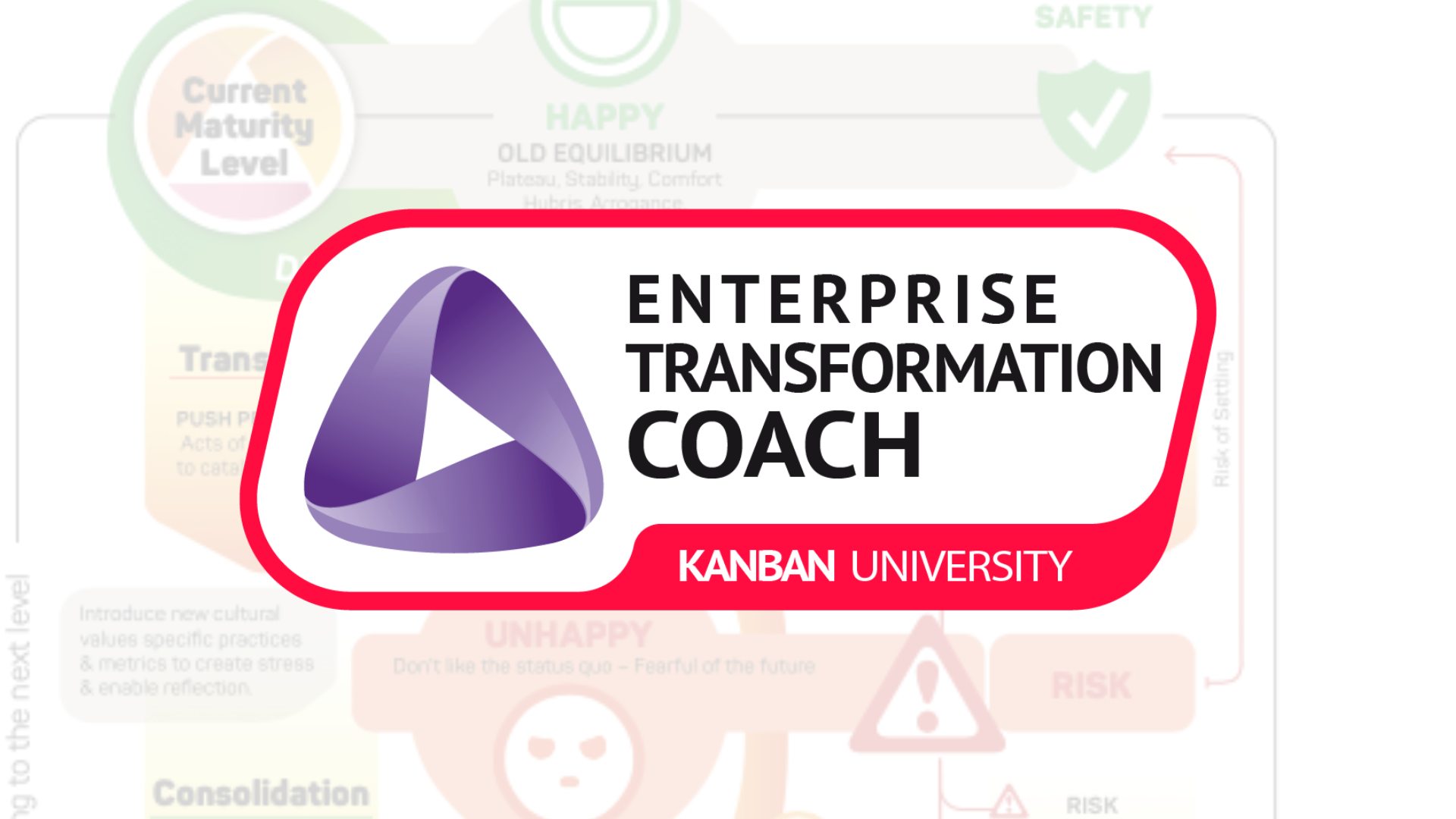Kanban for Remote Work: The Modern Enterprise
In the predominantly remote environment that we find ourselves in, it’s getting more difficult for enterprises to ensure sustainability and proper adaptation to the new normal. In this article we will discuss how individual Kanban can help your organization drive positive change in uncertain times. Learn how to overcome leadership crises and successfully manage a distributed workforce with Kanban for remote work.
Think of your organization as a network of interdependent services. You can improve its effectiveness by encouraging the use of Kanban systems to manage at every level from the individual at home, through to customer-oriented products, services, programs, and portfolios. For every service, there should be a Kanban system!
For every service there should be a Kanban system!
Why now?
Some developed countries generate as much as 80% of their GDP from the services sector. Yet, employees and managers in those businesses often fail to understand that they operate in services. If what they produce is “intangible goods”, then they are, more specifically, in “professional services”. For years, these businesses have persisted in using management methods developed for tangible goods and physical environments. For example, managing using paradigms from factories and civil engineering projects and using metrics and incentives designed for manufacturing industries.
The pandemic and the directive to work from home (WFH) has finally made it abundantly clear – if you can WFH, you aren’t dealing with a physical environment, and tangible goods, instead you are a professional services worker. Working independently and remotely, makes you a “service of one.” Understanding this is the first step to discovering the benefits of applying Kanban for remote work.
Most of the organizational challenges that enterprises face in a distributed environment are related to the lack of proper work visibility, team coordination, work and time management. Employees find themselves distracted by their families, pets, and home duties. Managers are struggling with ensuring efficiency and effective management.
The power of individual Kanban lies in its ability to solve all of these challenges at once.
Why Kanban?
At its core, the Kanban method was always about improved service delivery, meeting customer expectations, shorter time-to-market, and greater predictability. Its primary mechanism is the use of virtual Kanban systems (a counter-intuitive idea adapted from the manufacturing industry).
Kanban systems in factories limit work-in-progress (WIP) and signal “just-in-time” replenishment. In the professional services sector, virtual Kanban systems limit work-in-progress and prevent individuals, teams, departments, and larger organizational units from becoming overburdened.
The Kanban method recognizes that humans have limited capacity. Multitasking leads to stress, anxiety, poor quality of outcomes and long, unpredictable delivery times. Unfortunately, overwhelmed individuals working in ineffective systems perform poorly. As a result, they are viewed as untrustworthy by customers, who are disappointed by unpredictable lead times and deficient quality.
The goal of a Kanban system is to allow workers to manage their time and tasks more efficiently and effectively for the benefit of the customer.
A Network of Services
Regardless of your organizational size, it functions as an interconnected network of services. If you think of how your teams work together, you will discover an intricate web of dependencies. For each of the units of the network, Kanban boards can be created to visualize their workflows and make them more simple to manage.
Consider the big software development company X.
The business development manager may work mainly on a Sales Kanban board where he or she tracks deals and opportunities. However, this role is often involved in joint projects with the Marketing team, focused on lead generation. They own some tasks on the Marketing Kanban board as well.
When the company is planning and developing new features, the biz dev manager is also collaborating with the development team to communicate the customers’ business requirements. Some of the tasks on the Product Development Kanban board are waiting for his or her review and require input from the business.
Therefore, the Personal Kanban board of our business development manager will contain tasks from various projects led by marketing and product. His or her tasks on the Kanban will align to different organizational priorities from a number of departments. Having them in one place allows them to be managed effectively in a single central location.
Each of these projects delivers a service and the work of each team and each team member is contributing to the delivery of this service. If our business development manager fails to deliver, various projects can be affected and in turn affect other teams and initiatives. This is why it’s important for each team member to consider themselves as a service of one, and operate as such.
Becoming a Service of One
In the context of the pandemic and remote work, all of us are becoming a service of one. We are learning to rely less on our colleagues and aim to manage our workloads as independently as possible.
To manage this new, complex reality, individual team members are developing meticulous personal work tracking mechanisms. The most effective manifestation of work tracking during this time is the virtual Kanban board. Individual contributors and teams alike can build simple virtual Kanban systems to visualize the workflow and track work items as they move from start to complete (delivered to the customer).
Each team member can operate from their own backlog of work items and contribute to the initiatives of others on the team and adjacent teams by tracking activities on a Kanban system that lives online .
This way, each individual acts as a service of one, and can have their own personal Kanban board for task management related to all current projects that are in flight.

Personal and Team Kanban boards can look very similar. Regardless of the scale, the approach to developing Kanban systems and the boards that visualize intangible work and workflow is the same.
Your organization is a network of services and for every service, there should be a Kanban system! organization is a network of services and for every service there should be a Kanban system!
Benefits of Using Individual Kanban for Remote Work
When we work from home, it’s easier to get distracted and harder to keep everything under control in the workplace. Most approaches focus on helping managers oversee their teams and not on making the execution team’s job easier. The magic of Kanban is that it brings benefits to all parts of the organization — execution teams, managers, and even C-suite leaders.
When you work from home, clear communication becomes more difficult. This translates into limited visibility across teams and chaos within personal workflows.
Kanban helps manage work more efficiently by visualizing the status of tasks at all times, ensuring that no-one is under or overworked. This creates a sense of security where project progress does not depend on one person’s memory and proactiveness. The board is always there to show what needs to be done and by whom.
The sense of isolation is overwhelming for many people who are forced to work from home during the pandemic. Feeling as though you are still an integral part of your team becomes more difficult in a remote environment.
That is why, by considering yourself as a “service of one” within a network of services (team/org), all working by the same set of rules, can prevent burnout, reduce the stress from isolation, and help employees create a healthier work environment. By taking the time to build a virtual Kanban system for your personal tasks and connecting it to the systems of others can create the context in which efficiency and effectiveness can blossom.
To build a service-oriented organization, within which each service is managed with a Kanban system, contributors need to be prepared to implement a virtual Kanban system from backlog to finish line. An in-depth understanding of the Kanban method and its practices will give your implementation a greater chance of success from the very start.
Register for our latest course on Individual Kanban for remote work to become a certified professional in the Kanban method and develop your “service of one”.
Start your Kanban journey and optimize your remote work process!





